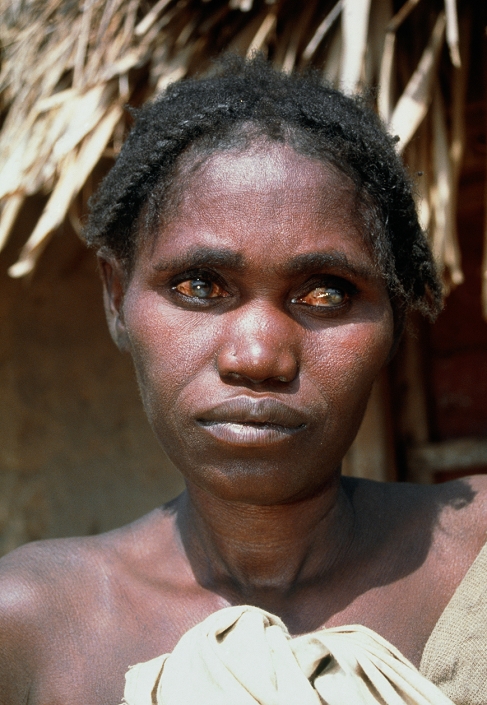
ED
Patient with onchocerciasis (Date of imaging unknown)
Onchocerciasis. View of a young mother blinded by onchocerciasis ('river blindness'). This type of filariasis is caused by the parasitic tiny worms (microfilariae) of Onchocerca volvulus. The larvae are transmitted from person to person by biting flies which breed in and live around rivers. The larvae grow into adults which produce the tiny worms. Blindness occurs as an allergic reaction when these worms die in or near tissues of the eye. The worms can be effectively treated using drugs. Photographed in Sudan.
Details
ID
10595414
Collection
License type
Editorial
Photographer
Creation date
17-11-2010
Contact Aflo for all commercial uses.

More
Top Categories
